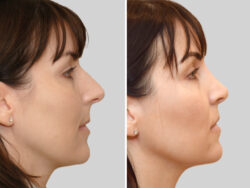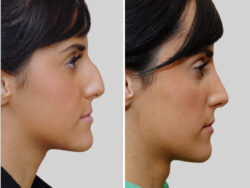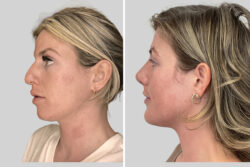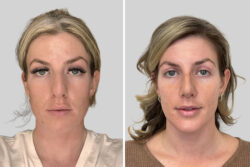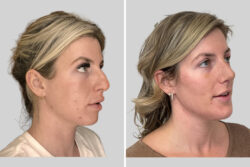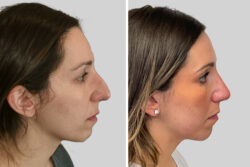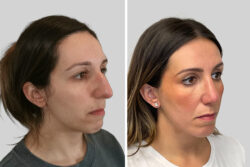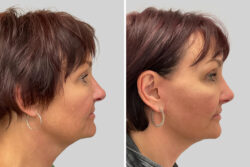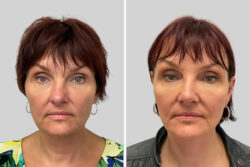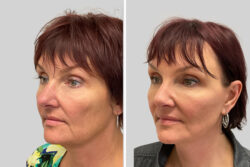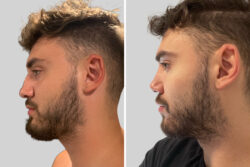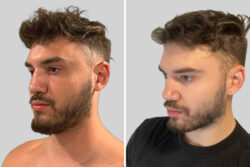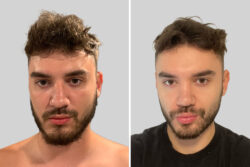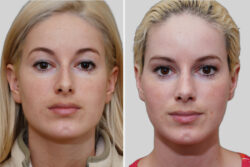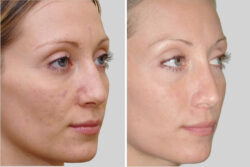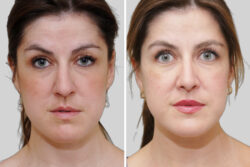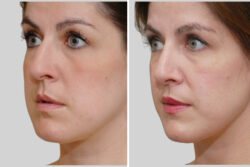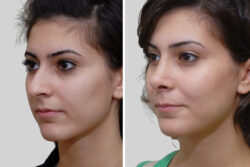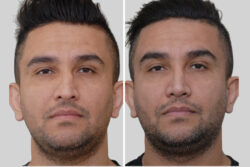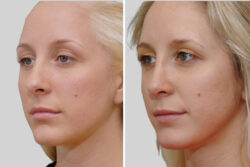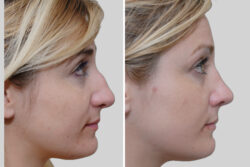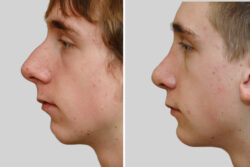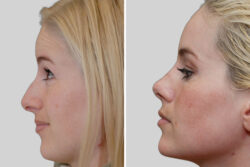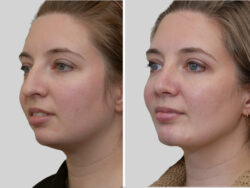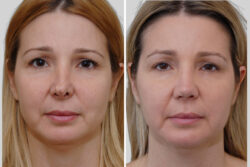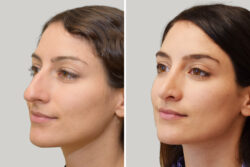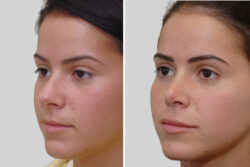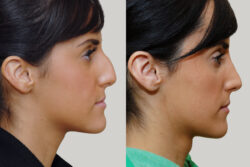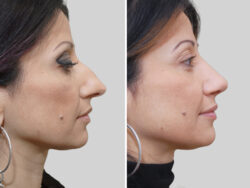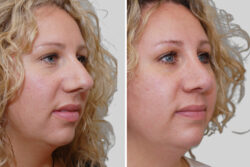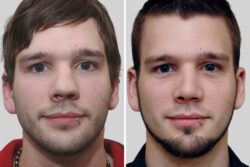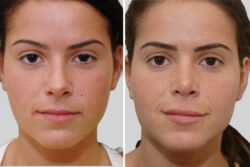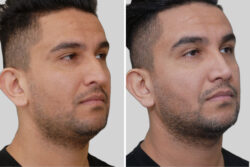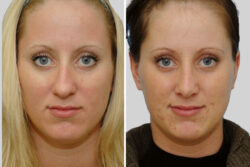NOSE JOBS / RHINOPLASTY
Rhinoplasty is the surgical procedure to reshape the nose. It can produce changes to the appearance and the balance of the face and can also improve breathing to allow for better sleep and even athletic performance. Depending on the needs of the patient there are different types of Rhinoplasty—open, closed, revision, and Rhinophyma.
Why choose Dr. Goldberg for your nose job?
Creating a natural, more attractive look after your rhinoplasty (nose job) surgery requires a surgeon with a firm grasp on the nuances of facial surgery achieved through experience and specialized training. Dr. Goldberg possesses unique qualifications in this area.

As a Plastic and Craniofacial Surgeon Dr. Goldberg has acquired extensive specialized training in nose and facial surgery. He is one of only a handful of Canadian plastic surgeons to have undergone this additional training.
In addition to years of performing cosmetic facelift surgery, his surgical skills include experience performing thousands of complex facial reconstructive plastic surgery procedures.
Commitment to Patient Care – As an Independent Medical Advisor to the College of Physicians and Surgeons of Ontario he is committed to ensuring patient safety is the top priority at private surgical facilities.
Background
Dr. Goldberg believes the nose, as the central feature of the face, plays a unique role in overall facial aesthetics. Subtle alteration to one’s nose can often have a dramatic impact.
Rhinoplasty (nose job) is the surgical procedure to reshape the nose. It can produce changes to the appearance and the balance of the face and can also improve breathing to allow for better sleep and even athletic performance. Dr. Cory Goldberg has a vast amount of expertise and experience in the different types of Rhinoplasty—open, closed, revision, and Rhinophyma.
During consultations, Dr. Goldberg will discuss the options most suited to a patient’s specific needs and explain the process in detail so the patient is fully aware of what is involved and what the expected results will be. He will also explain the risks associated with the procedure and the nose job recovery process including dealing with post-operative pain and swelling as well as the actions patients can do to accelerate the healing process.
As a Plastic and Craniofacial surgeon, Dr. Goldberg is trained to create proportion and symmetry through careful judgment and surgical planning, including 3D Vectra imaging, providing you with photo simulations of your anticipated results.
Planning for Rhinoplasty surgery
Making the face as attractive as possible allows for an individual to have an increased sense of self-esteem, and affects how the individual is viewed by the world. With the nose being the focal point of the face, nose surgery (medically termed Rhinoplasty), is becoming increasingly more popular. Nose jobs are often necessary to improve one’s cosmetic appearance, as well as to correct breathing problems and/or facial disfigurement.
Before undergoing Rhinoplasty, two factors must be weighed.
The first is the type of Rhinoplasty the individual would benefit from most to achieve their desired outcome. A Closed Rhinoplasty requires almost an invisible incision that is made inside the nostril. This reduces the scarring and recovery time and is commonly used in cases where the amount of reshaping required is small. An Open Rhinoplasty is used for more complex procedures and is done using both an internal and external incision to the structure of tissue that is located between the nostrils, known as the columella.
A second factor to be considered is the age of the patient. While many younger people are eager to correct what they see as an unattractive nose, an x-ray may be required to determine whether the individual’s bones have reached full maturity.
The surgery generally takes about three hours and the patient is sent home the same day with a padded cast over the nose to protect it while it heals.
Medication is prescribed to reduce pain and discomfort during the recovery period. Dissolving sutures are used for the internal incisions so that there is no need to remove them. Non-dissolving miniature sutures are used for the external incision. If packing has been placed in the nostril to reduce bleeding, these are normally removed during the post-surgery examination which normally takes place two days after surgery. Nasal sprays are usually prescribed to reduce swelling and to ease breathing and to prevent infection.
Individuals undergoing a nose job are often concerned about the increase in the swelling of the nose and the area around the eyes, but this is normal and it subsides by about 80% within two weeks. At this time patients are able to see the change in the shape of the nose. The remaining swelling will disappear within 9 to 12 months as the body absorbs the excess fluid buildup which is normal after a nose job.
Rhinoplasty when done by a qualified cosmetic surgeon is a safe procedure and the patient is able to resume normal activities within a day or two, although the obvious physical signs of having undergone the procedure will be visible for several more days. In most cases one procedure is all that is need to achieve the desired look and only a small number of all patients may have to undergo revision surgery to achieve the desired nose or to correct any problems arising out of the initial surgery.
The aim of Rhinoplasty is to enable the patient to reshape the nose to achieve the appearance he or she desires. The benefits of the procedure outweigh the few days of discomfort involved.
What is Open Rhinoplasty?
Open Rhinoplasty is the most common approach to nasal surgery. It is performed through incisions on the inside of the nose, as well as a single 4 or 5 mm external incision on the undersurface of the narrow area between the two nostrils. This type of approach allows visualization of the involved structures during surgery to make the alterations according to the plan that you make with Dr. Goldberg. The alternative approach is Closed Rhinoplasty, but this is not appropriate for all patients and requires careful consideration between you and Dr. Goldberg.
The Procedure
The operation is most often done under general anaesthetic as same-day surgery. The operation takes approximately 3 hours, and you are usually allowed to go home within 2 hours after surgery. Long lasting local anaesthetic is injected after you are asleep to prevent sensitization of the nerves during the procedure, and this significantly reduces discomfort after surgery. You are also given intravenous medication to reduce swelling and prevent nausea after surgery. After the incisions are made and the relevant structures are visualized, reduction and alteration of the cartilage and bone of the nose are performed according to the plan made between you and Dr. Goldberg. At the end of surgery dissolving sutures are used to stitch the internal incisions, 5 or 6 non-dissolving miniature sutures are placed in the one small external incision. Packing is sometimes placed inside the nose to reduce bleeding. Dr. Goldberg uses a patented type of packing with integrated breathing tubes, which allows you to breathe through your nose even while the packs are in place. Finally, a padded split (cast) is placed on the top of the nose to protect the shaping that was done in surgery.
Risks associated with Rhinoplasty
There are general risks with Rhinoplasty such as bruising, bleeding, infection, and risks associated with general anaesthetic. There are functional risks such as reduced nasal airway and dryness in the nose. Cosmetic risks include irregularities that may be visible or felt by touch only. It is possible, though uncommon, to worsen deviation. Approximately 15% of all nose job patients will undergo revision surgery at some point. This may be to address minor irregularities such as a small bump of bone that can be felt, or as major as a complete Revision Rhinoplasty.
Alternatives to getting a nose job
Some minor nasal deformities can be addressed by Filler Products, though their role is very limited. There are no other non-surgical alternatives. Closed Rhinoplasty is an option for some people.
Benefits of getting a nose job
A nose job is a reliable procedure that can dramatically improve the appearance and balance of your face. With good communication between you and Dr. Goldberg you will be able to direct a personalized plan for surgery that will address your goals and fulfill your needs. Also, it is an operation that can greatly improve your nasal breathing, restoring function and improving your ability to breathe during sleep and while participating in sports.
What is Closed Rhinoplasty
Closed Rhinoplasty is also known as Internal Rhinoplasty, this type of operation is done through incisions just on the inside of the nose, with no external scars. This technique is able to address many common issues in Rhinoplasty surgery, and is the best choice for some people. The advantages are that it has no external scar, and may result in less swelling since it requires less dissection and exposure during surgery. However, it is not for everyone and not all problems can be addressed with this approach. The decision of what approach to use for your surgery will be made in discussion between you and Dr. Goldberg after your objectives and personal needs are assessed.
Recovering From Rhinoplasty
The surgery itself is normally done under general anaesthesia and depending on the type of procedure and patient-specific conditions, takes about three hours to complete. In most cases, the patient is allowed to return home the same day, typically within two hours of the nose job being completed. Because there will be some after effects from the anaesthesia, a companion will be required to drive the patient to his or her home.
Dr. Goldberg prescribes several medications to ensure your comfort. These usually include Celecoxib and Percocet to control inflammation and pain, Ondansetron to prevent upset stomach, and Lorazepam (Ativan) to help with sleep if you need it. You will be seen in 2-3 days after surgery for a check-up, and to remove the packs from your nose (if any were inserted). Once the packs are removed you will also be prescribed nasal sprays that reduce swelling, improve nasal breathing, and help cleanse the internal incisions. Swelling will involve the nose and the area around the eyes, and usually increases over the first 3 days. It then rapidly subsides over 1 to 2 weeks, at which point you will be able to see the improvement in the shape of your nose. Approximately 15-20% of the swelling remains and it takes 9 to 12 months to subside and for your body to re-absorb this extra fluid. For more details please refer to the standard care sheet given to our patients. Dr. Goldberg monitors each patient’s progress carefully to modify the normal Rhinoplasty recovery protocol to suit specific conditions and to ensure maximum comfort and rapid recovery.
In most cases, a patient can return to normal social activities within two or three weeks with no noticeable signs of the Rhinoplasty having been done. Strenuous activities can be resumed after about a month. Dr. Goldberg will brief the patient carefully on all precautions during the nose job recovery period.
Revision Rhinoplasty
Overall, about 15% of Rhinoplasty patients will choose to undergo some revision surgery. This may be to address a minor concern such as a bump on the bone, a moderate concern such as limited nasal breathing, or a major concern with unsatisfactory results. These complications are best avoided, which can be accomplished by good communication between you and your doctor.
Dr. Goldberg sees many patients for Revision Rhinoplasty who have been operated on previously by other surgeons. Many people who are unsatisfied after Rhinoplasty feel betrayed and disappointed that their surgeon failed to address their initial objectives, and afterwards were often unresponsive to their concerns about the outcome. Many surgeons are reluctant to operate on these patients due to the formidable challenge of Revision Rhinoplasty.
Revision Rhinoplasty is a particular challenge because the tissue around the nose is scarred internally. Also, normal anatomy and anatomic relations are disrupted, making planning and operating especially challenging. Often, the original operative report is not available or inadequate to outline what was done in the initial operation.
Performing this surgery requires particular skill and experience. Dr. Goldberg performs many such operations every year. Revision Rhinoplasty may be done through either an Open Rhinoplasty or Closed Rhinoplasty approach, depending on the particular needs of the patient. Dr. Goldberg is pleased to offer this service, and will listen to your concerns without judgement or reservation.

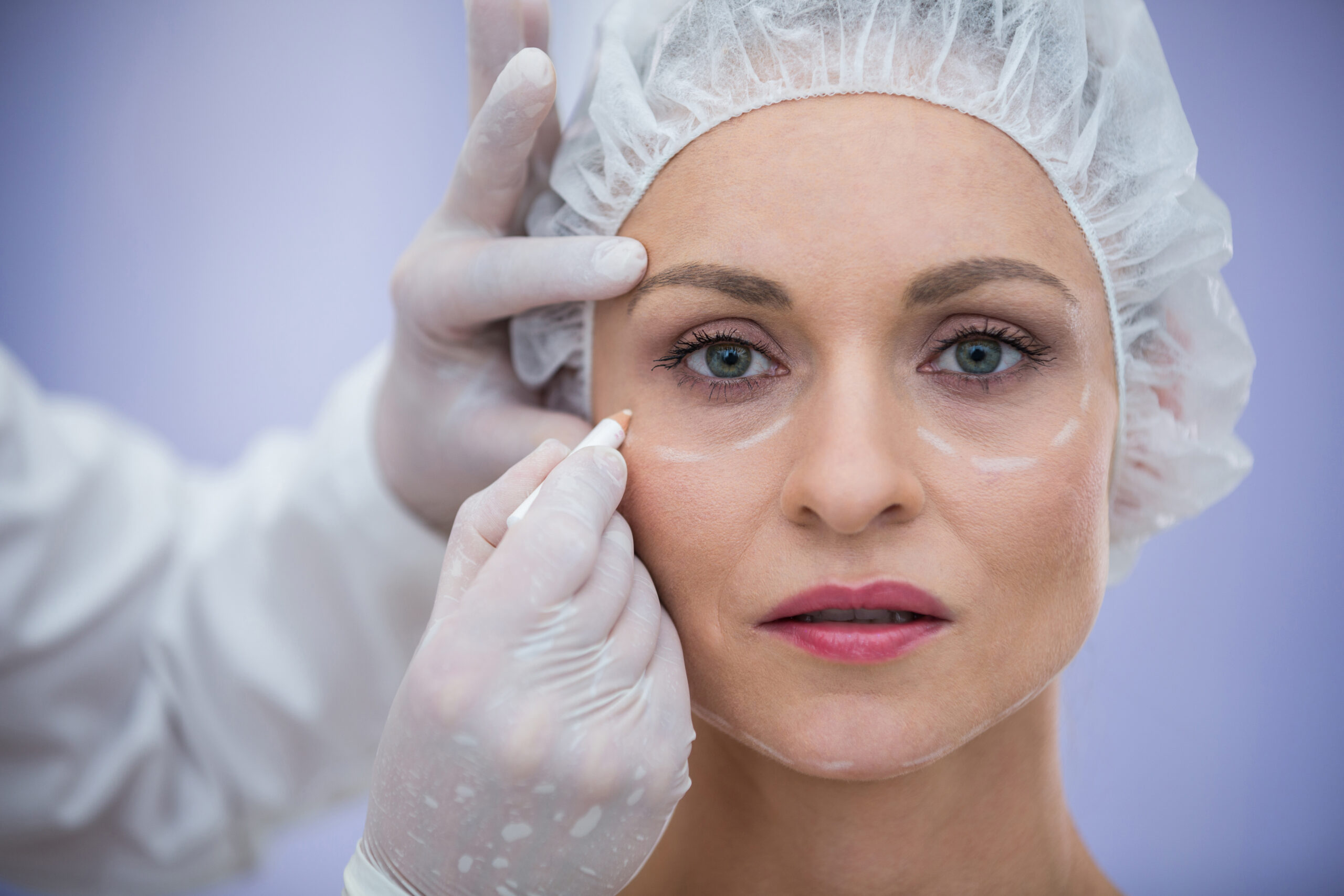 Face
Face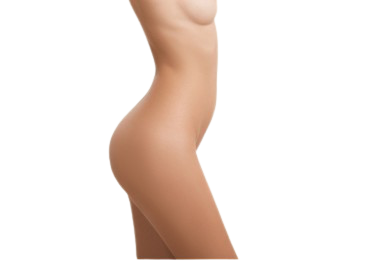 Body
Body Breast
Breast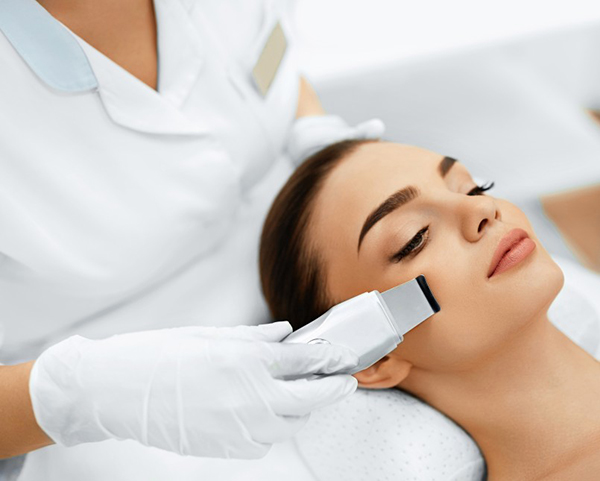 Non-Surgical
Non-Surgical Hair Transplants
Hair Transplants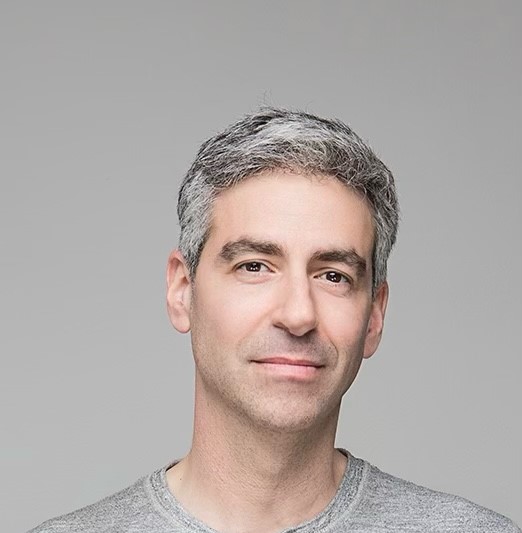 Dr. Cory S. Goldberg
Dr. Cory S. Goldberg Our Staff
Our Staff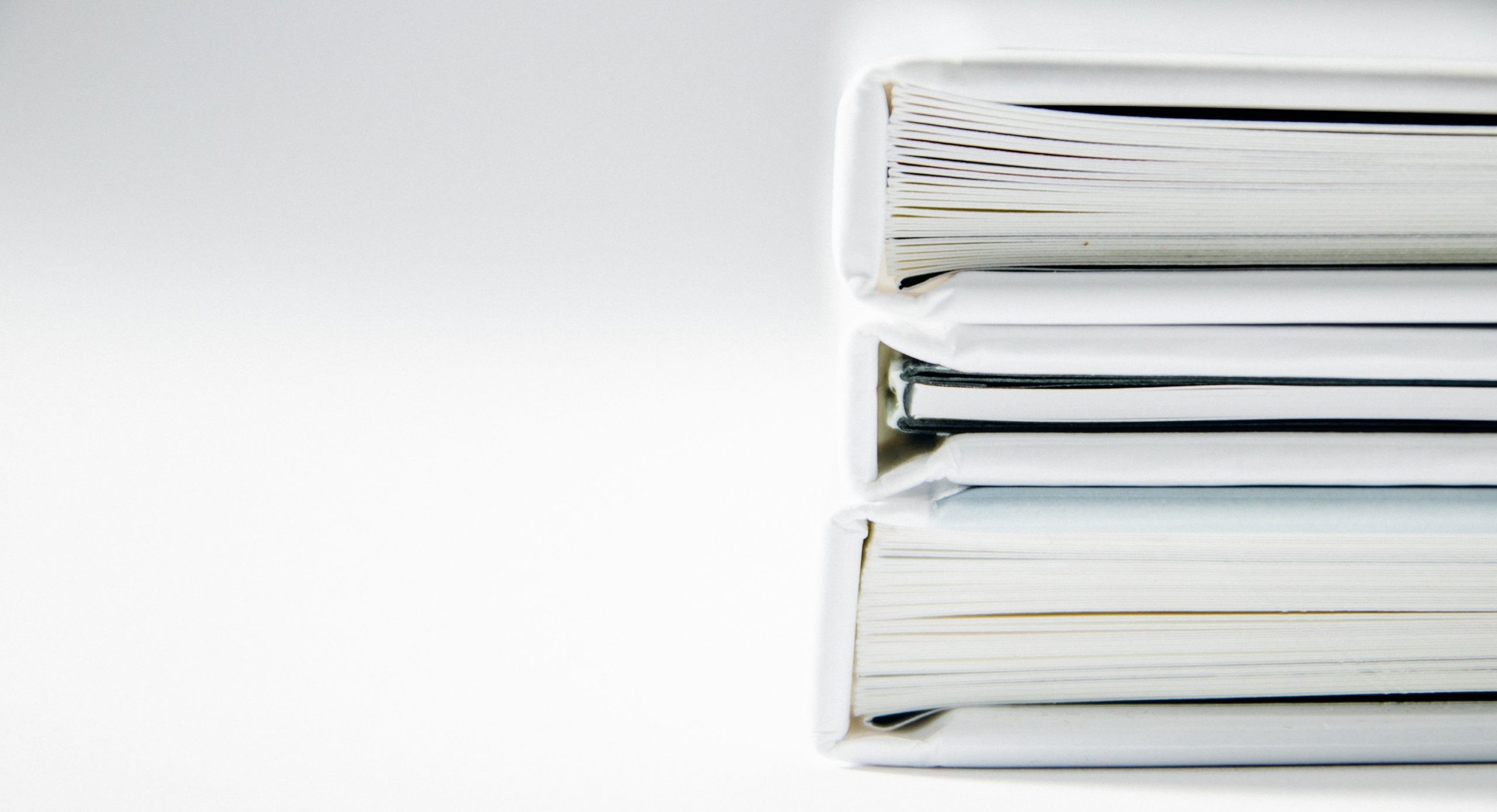 Policies
Policies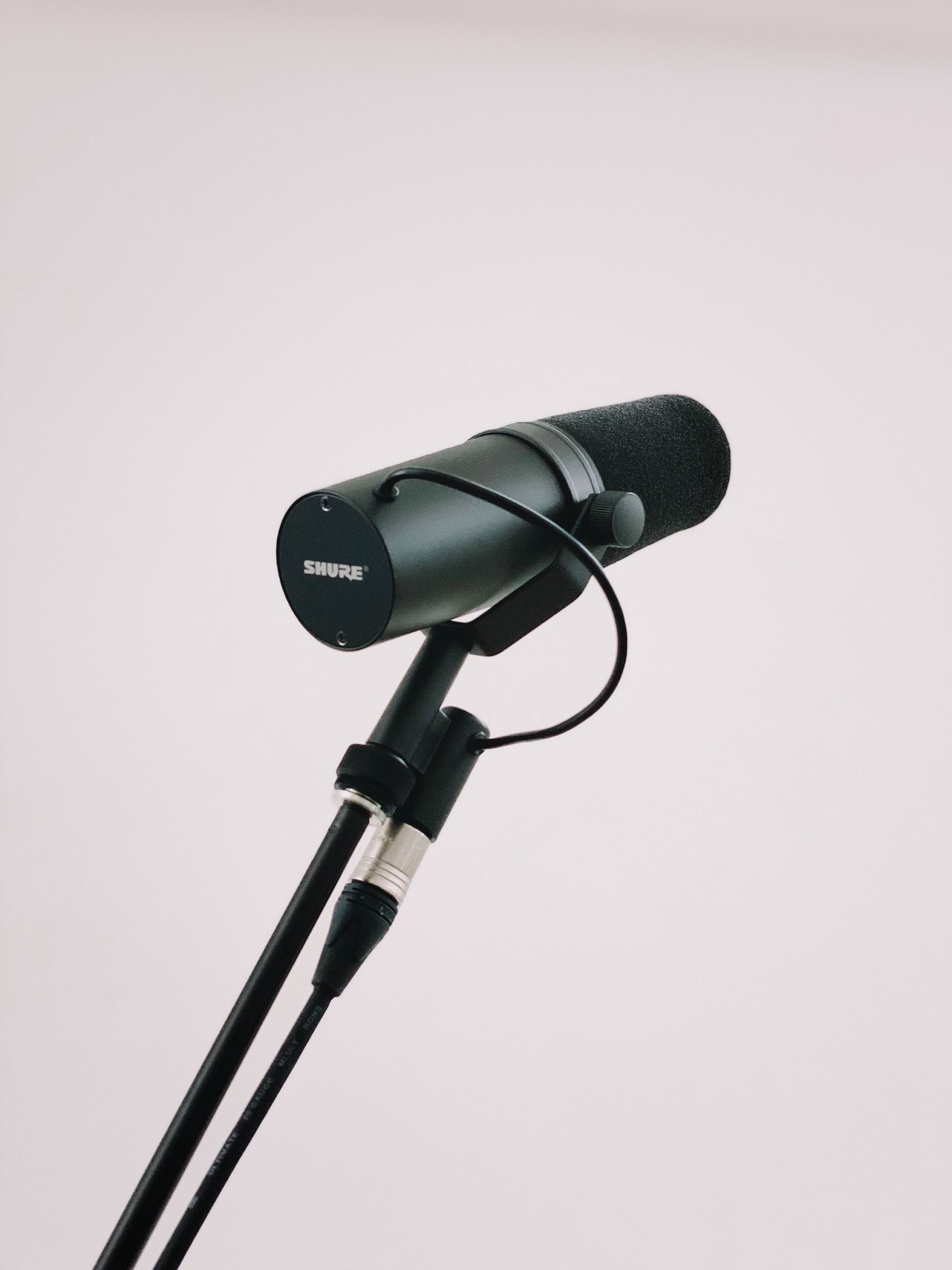 Media
Media Reviews
Reviews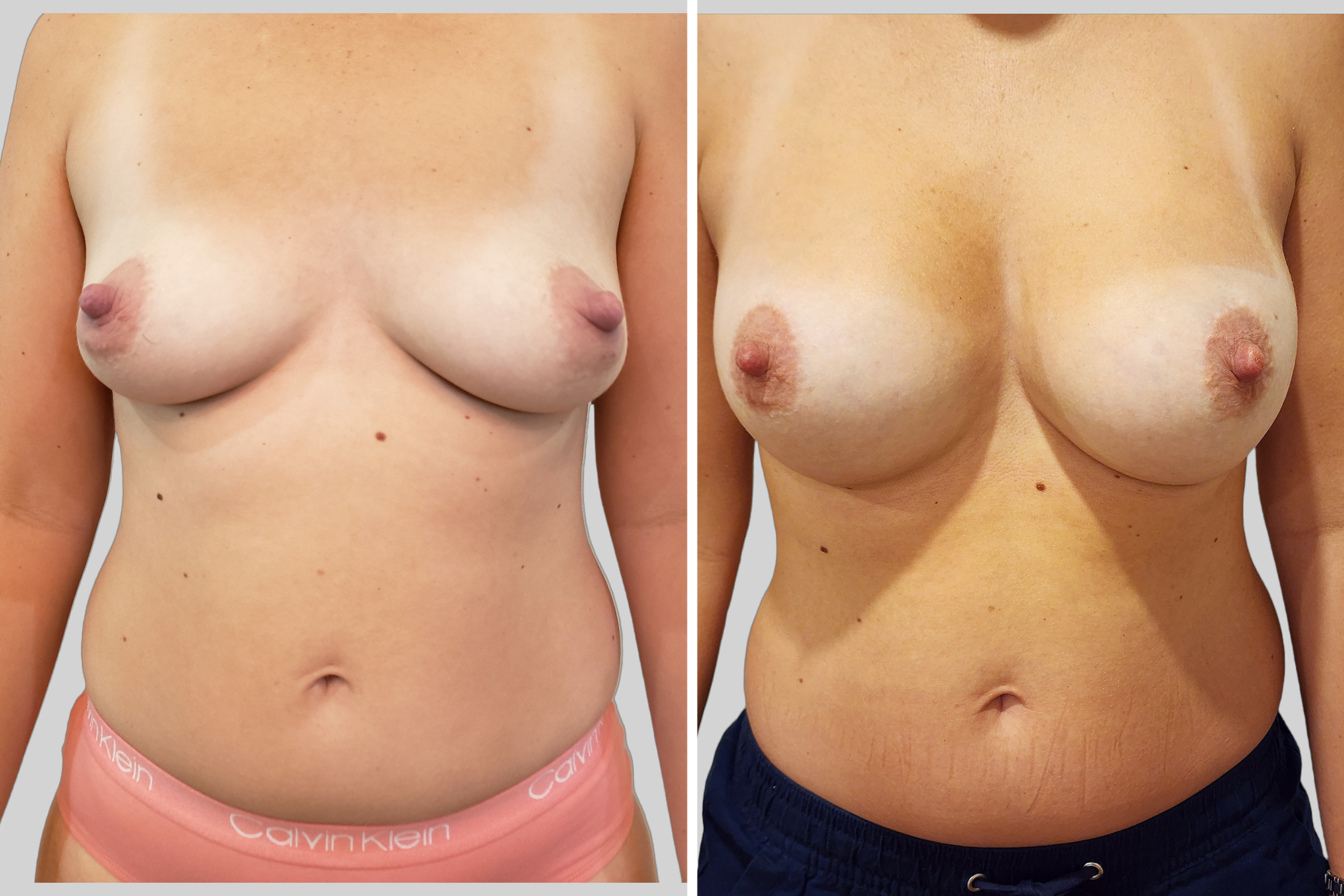 Breast Gallery
Breast Gallery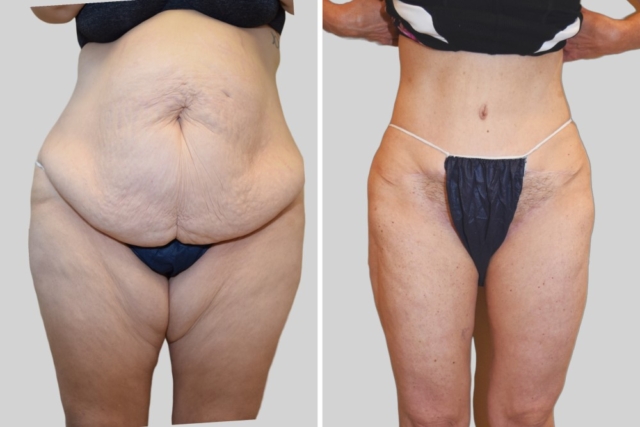 Body Gallery
Body Gallery